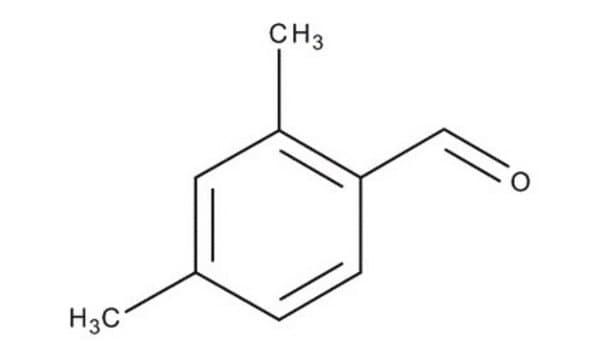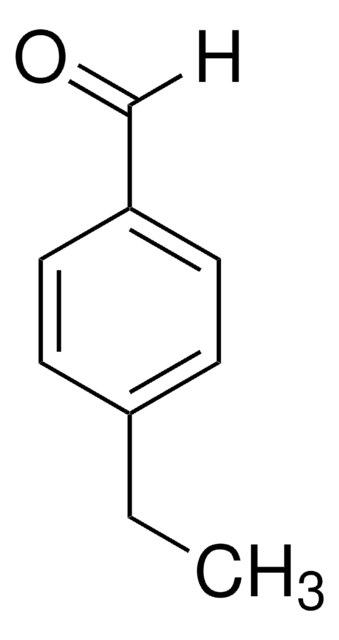All Photos(1)
About This Item
Linear Formula:
(CH3)2C6H3CHO
CAS Number:
Molecular Weight:
134.18
EC Number:
MDL number:
UNSPSC Code:
12352100
PubChem Substance ID:
NACRES:
NA.22
Recommended Products
grade
technical grade
Assay
90%
form
liquid
refractive index
n20/D 1.549 (lit.)
bp
102-103 °C/14 mmHg (lit.)
mp
−9 °C (lit.)
density
0.962 g/mL at 25 °C (lit.)
functional group
aldehyde
SMILES string
Cc1ccc(C=O)c(C)c1
InChI
1S/C9H10O/c1-7-3-4-9(6-10)8(2)5-7/h3-6H,1-2H3
InChI key
GISVICWQYMUPJF-UHFFFAOYSA-N
Looking for similar products? Visit Product Comparison Guide
General description
The D values of 2,4-Dimethylbenzaldehyde were studied.
Signal Word
Warning
Hazard Statements
Precautionary Statements
Hazard Classifications
Acute Tox. 4 Oral
Storage Class Code
10 - Combustible liquids
WGK
WGK 1
Flash Point(F)
192.2 °F - closed cup
Flash Point(C)
89 °C - closed cup
Choose from one of the most recent versions:
Already Own This Product?
Find documentation for the products that you have recently purchased in the Document Library.
Determinations of large ZFS D-parameters in 2,4-, 2,5- and 3,4-dimethybenzaldehydes dispersed in durene single crystals.
Despres A and Migirdicyan E.
Chemical Physics, 22(1), 121-130 (1977)
Matthias Onghena et al.
Food additives & contaminants. Part A, Chemistry, analysis, control, exposure & risk assessment, 31(12), 2090-2102 (2014-11-20)
In 2011, the European Union prohibited the production of polycarbonate (PC) baby bottles due to the toxic effects of the PC monomer bisphenol-A. Therefore, baby bottles made of alternative materials, e.g. polypropylene (PP) or polyethersulphone (PES), are currently marketed. The
Our team of scientists has experience in all areas of research including Life Science, Material Science, Chemical Synthesis, Chromatography, Analytical and many others.
Contact Technical Service








